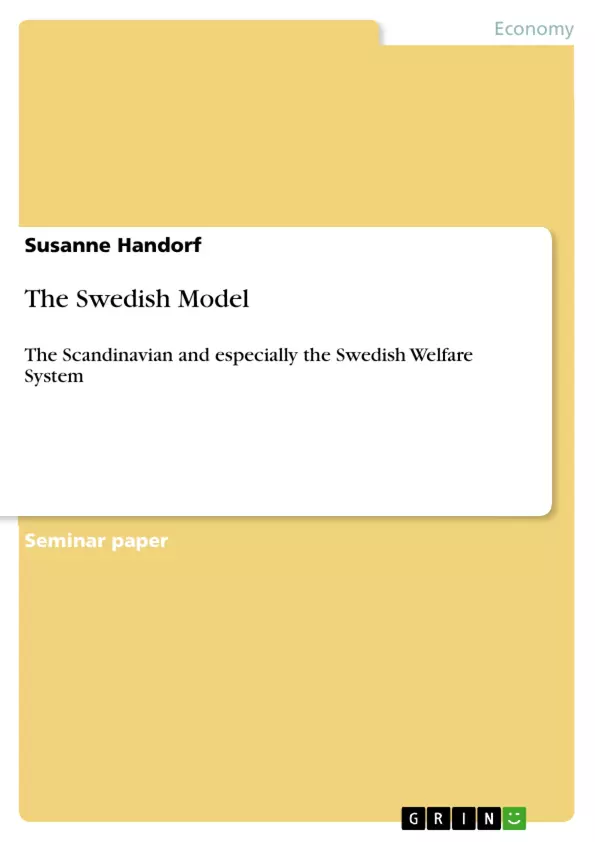Diese Arbeit beinhaltet einzelne Fragen zum schwedischen Wohlfahrtsstaat, die anhand der Literatur diskutiert werden.
Inhaltsverzeichnis (Table of Contents)
- 1: Just name: Which are in your opinion the most important stages in the creation of the Social Welfare State in Sweden?
- 2: Just name: Which are the principal goals of social policy in Sweden?
- 3: If you compare the Swedish Welfare System with some other countries, which differences and similarities do you find?
- 4: According to Roland Huntford (p. 305) Swedes love their servitude. What do you think of that statement?
- 5: What kind of criticism has been offered of the Scandinavian Welfare States? What is your opinion about this criticism? Do you find it relevant and fair?
- 6: Is decentralisation a way of making the Social Welfare more effective?
- 7: Is the Scandinavian Welfare model threatened? What kind of future problems can you imagine?
Zielsetzung und Themenschwerpunkte (Objectives and Key Themes)
This paper aims to provide an analysis of the Swedish Welfare System, focusing on its historical development, key objectives, and comparative aspects. It explores the evolution of the system, delves into its fundamental goals, and examines its similarities and differences with other welfare models, particularly in the United States and Germany.
- Evolution of the Swedish Welfare System
- Principal Goals of Social Policy in Sweden
- Comparison with Other Welfare Models
- Critical Perspectives on the Scandinavian Welfare States
- Future Challenges to the Scandinavian Welfare Model
Zusammenfassung der Kapitel (Chapter Summaries)
The paper begins by outlining the key stages in the creation of the Swedish Social Welfare State, highlighting the role of various political and social forces in its development. It then explores the principal goals of social policy in Sweden, emphasizing its commitment to ensuring a secure living standard and promoting social equality for all citizens. The paper proceeds to examine the Swedish Welfare System in comparison with the systems of other countries, particularly the United States and Germany, highlighting both shared elements and distinctive features. The paper also addresses critical perspectives on the Scandinavian Welfare States, providing a nuanced discussion of the strengths and limitations of the model.
Schlüsselwörter (Keywords)
The paper revolves around the key themes of social welfare, social policy, social equality, Scandinavian Welfare Model, comparative welfare systems, and criticism of welfare states. It explores the historical development, objectives, and challenges of the Swedish Welfare System, analyzing its similarities and differences with other models. It is a valuable resource for understanding the complexities of social welfare in a global context.
- Quote paper
- Susanne Handorf (Author), 2011, The Swedish Model, Munich, GRIN Verlag, https://www.grin.com/document/167039



